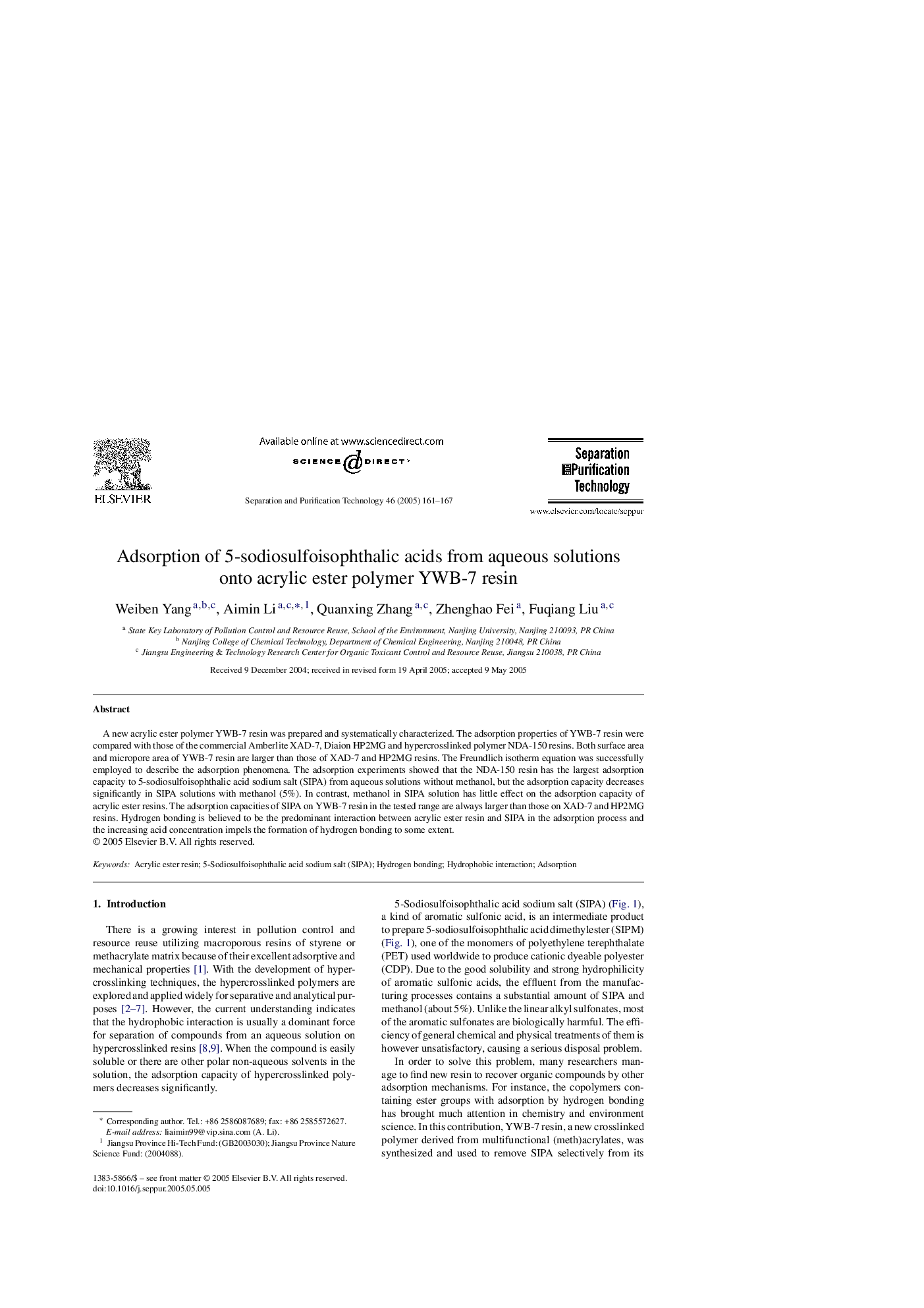| Article ID | Journal | Published Year | Pages | File Type |
|---|---|---|---|---|
| 10390145 | Separation and Purification Technology | 2005 | 7 Pages |
Abstract
A new acrylic ester polymer YWB-7 resin was prepared and systematically characterized. The adsorption properties of YWB-7 resin were compared with those of the commercial Amberlite XAD-7, Diaion HP2MG and hypercrosslinked polymer NDA-150 resins. Both surface area and micropore area of YWB-7 resin are larger than those of XAD-7 and HP2MG resins. The Freundlich isotherm equation was successfully employed to describe the adsorption phenomena. The adsorption experiments showed that the NDA-150 resin has the largest adsorption capacity to 5-sodiosulfoisophthalic acid sodium salt (SIPA) from aqueous solutions without methanol, but the adsorption capacity decreases significantly in SIPA solutions with methanol (5%). In contrast, methanol in SIPA solution has little effect on the adsorption capacity of acrylic ester resins. The adsorption capacities of SIPA on YWB-7 resin in the tested range are always larger than those on XAD-7 and HP2MG resins. Hydrogen bonding is believed to be the predominant interaction between acrylic ester resin and SIPA in the adsorption process and the increasing acid concentration impels the formation of hydrogen bonding to some extent.
Related Topics
Physical Sciences and Engineering
Chemical Engineering
Filtration and Separation
Authors
Weiben Yang, Aimin Li, Quanxing Zhang, Zhenghao Fei, Fuqiang Liu,
